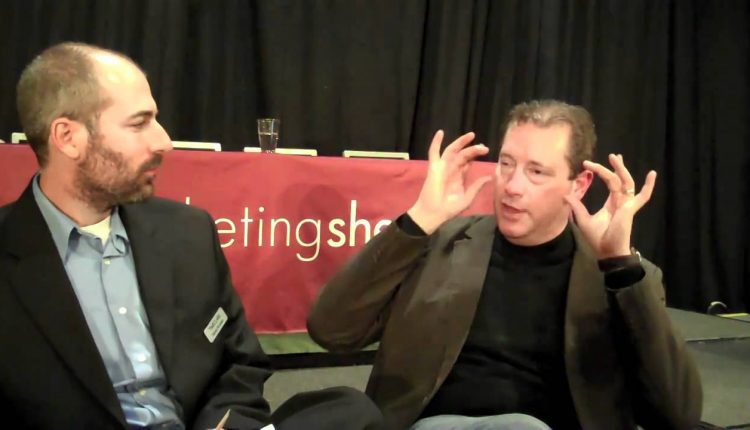At the recent MarketingSherpa B2B Marketing Summit in Boston, I had the chance to interview noted marketing strategist and best-selling author David Meerman Scott about email marketing…
Thanks to a generous sponsorship from ExactTarget, David will be the keynote speaker at MarketingSherpa Email Summit ’11 in Las Vegas. He brought up some really good points, especially about personalizing email messages. At MarketingExperiments, we’ve taught extensively about having a conversation with your customer in an authentic voice, not a marketing voice. As Flint McGlaughlin says, “People don’t buy from websites, people buy from people.”
At first, it might seem counterintuitive. I know it was for me. But having to write up a Research Article on this topic back in February really solidified the idea in my head. Here’s an excerpt from that article…
For example, one avenue of communication often overlooked is the “From:” field. Which email are you more likely to open? An email from Sales? Or an email from a Technical Support Manager who has sent you a personal message using his name?
In your entire life, you have likely never had a conversation with a Sales Department. A Sales Department did not come in on Monday morning and share the amazing hike he took with his son over the weekend. A Sales Department was not upset when his dog of 16 years died. And a Sales Department has never helped you make your computer run faster.
But Brian probably has. And when you talked to Brian about that computer or that hike, he likely didn’t speak in vaguely generic terms (“Walked on Trail,” “Save on Memory”). He told you his story in a way that related to you. (“I know how you loved hiking on Big Talbot Island. Well, this weekend we went there and spotted a school of bottlenose dolphins just yards from the trail,” “You can speed up your Dell Latitude D620 with this free memory tool.”)
Related resources
Email Summit 2011 – Learn from MarketingSherpa’s Latest Research, Case Studies and Training
Optimize Email Respons




Hey there,
That’s a point I’ve thought about for quite a while, whether the “From” field should have a person’s name or the company name. I know that “Sales” is an imprudent choice from the “From” field, but what about the company name?
For example, I open mail from “Borders” because I know there’s a good coupon inside it. I don’t know (or care) who’s behind it. In fact, if Borders used the name “Mary Kimson” in the “From” field, I might not even open it because I might assume it’s a no-name company since I’ve never heard of her.
What’s your thought on this. If it’s a big company, should you forego the name?
–Dan
Dan,
You bring up a valid point. And the answer is — you must test it, because results will vary depending on the brand, the list, and even the segment of the list you choose to send to.
For example, rabid Borders fans will likely open any email from Borders. But the rest of the list might just see it as a sales email, and send it straight to the trash. Boris Grinkot recently wrote a good post about the different visitor types that your site receives…and the same applies for email. Some people care about everything Borders sends…most probably forgot how they got on the list in the first lpace.
However, what if Borders segmented their list, and had community managers that were focused on different segments?. So, in Borders case, perhaps — Mystery, SciFi, Romance, etc. And then you received an email “From: Mystery Librarian Mary Smith.” Would that get more opens? And what if you segmented that list? Your biggest purchasers get an email “From Borders Mystery Librarian Mary Smith.” Again, you must test.
But that, in the end, is the overarching principle we’re talking about here — having a relevant conversation with your customer. The “From:” field is just one way to accomplish that.
A former client allowed me to experiment a little with their Froms to boost the open rate and we found that personalization wasn’t the way to go – especially with all the SPAM trying to slip through the back door with generic names.
Since the From field tends to be the first bit of data to be read when opening an inbox, we employed a tactic David discussed in the video – we’d run the offer/product through the news and social media to locate recent related topics.
For example, one day, while promoting a musical product, we discovered that Ellen DeGeneres had just signed Michael Grayson to her newly minted label. By incorporating this news in the From field, instead of the usual rep’s name, we boosted our open rates substantially.